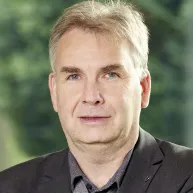Behavioral and Cognitive Neuroscience
The plastic capacity of the adult and aging brain is at the core of its ability to continuously adapt to new demands and to learn new skills throughout life. Our research focuses on identifying mechanisms underlying cortical plasticity and the structure/function relationships between cognitive, sensory, and motor performance and learning. Based on our findings, we develop interventions to improve perception, motor control, and cognition and to thwart age-related decline. Interventions include perceptual or motor training, physical activity for improving cognitive abilities, or even transcranial direct current stimulation (tDCS) of the brain. Using very low currents, with tDCS we modulate neural activity to interfere with brain processes and to facilitate learning. Because it is absolutely safe and non-harmful to the participant, this technique has become a standard tool for brain stimulation.
- Plasticity of the minimal self in aging (PALMS): In this project, which is part of the DFG priority program “The Active Self” (www.activeself.de), we investigate how Body Ownership and Sense of Agency emerge through embodiment of a virtual tool and ask which neural mechanisms underlie the construction of the minimal self. We also probe the extent to which the minimal self is plastic and affected by sensorimotor experiences. In a lifespan developmental perspective, we show that ownership and agency depend on integration of the virtual tool into the own body schema; in other words, the representation of the body in the brain. Our results help to understand how professionals (surgeons, sportsmen and -women, and musicians) gain mastery of their tools and how interventions for facilitating learning might be developed based on these findings.
- Tactile aging and plasticity in musicians (TAPmusic): With transcranial direct current stimulation (tDCS), we examine how age and expertise affect the mutual balance between excitation and inhibition within the somatosensory cortex. Tactile perception is important to manual dexterity and therefore to the mastering of many daily activities. Impairment of tactile perception in older age often results in the loss of independence. However, age-related decline in tactile performance can be delayed or prevented by training and acquisition of tactile expertise in middle adulthood, for example in musicians. With this follow-up study to the Bremen Hand Study @ Jacobs, we use tDCS to modulate intracortical excitation and inhibition within the somatosensory cortex and by that facilitate tactile perception and manual dexterity.
- The creative mind: Having a creative mind is one of the gateways for achieving fabulous success and remarkable progress in professional, personal, and social life. In this project, we contribute to an overarching model of creative performance and its dependency on creative cognitions, creative drive, neural mechanisms, and neuromodulatory factors. Using tDCS over the frontal cortex we interfere with cognitive functions such as inhibition control and thus also experimentally manipulate creative performance. In the future we aim to develop creative activity interventions to activate and facilitate cognitive abilities in older adults.
- Balance and gait in the elderly: Falling has various physical and psychological consequences in older adults. In a recent study, we confirmed that perceived autonomy was negatively associated with a history of falls. With higher self-efficacy, the association between falls and autonomy was less substantial. Further, we extend previous findings in that self-efficacy also mediated the effect of falls on perceived autonomy and conclude that interventions facilitating self-efficacy might ameliorate negative effects of falling on autonomy of older adults. Based on these findings, we further develop and evaluate training interventions for elderly people for enhancing gait and balance and to reduce the risk for falls. We used transcranial direct current stimulation to facilitate balance training.
Prof. Godde’s group currently consists of one postdoctoral fellow and two PhD students. His research is funded by PALMS (Plasticity of the minimal self in aging; GO 802/12) within the DFG priority programme, The Active Self, and TAPmusic (Tactile aging and plasticity in musicians; GO 802/11).
- Khalil, Radwa; Godde, Ben; Karim, Ahmed A (2019) “The link between creativity, cognition, and creative drives and underlying neural mechanisms”, Frontiers in neural circuits, 13:18.
- Khalil, Radwa; Karim, Ahmed A; Kondinska, Angela; Godde, Ben (2020) “Effects of transcranial direct current stimulation of left and right inferior frontal gyrus on creative divergent thinking are moderated by changes in inhibition control”, Brain Structure and Function, 225(6):16911704.
- Godde, Ben; Dadashev, Lev; Karim, Ahmed A (2020) “Effects of tDCS on Tactile Perception Depend on Tactile Expertise in Both Musicians and Non-Musicians”, Brain Sciences,10(11):843.
- Bhaskarachary, Chaitra; Najafabadi, A Jahanian; Godde, Ben (2020) “Machine Learning Supervised Classification Methodology for Autism Spectrum Disorder Based on Resting-State Electroencephalography (EEG) Signals”, 2020 IEEE Signal Processing in Medicine and Biology Symposium (SPMB):1-4.
- Imani, Hadis; Godde, Ben (2021) “The association between falls and autonomy in older adults is mediated by self-efficacy”, Discover Psychology,1(1):1-13.

